#Tracing Paper Comix
Explore tagged Tumblr posts
Note
i know someone else has already sent in something like this but. i know nothing ab ff (f4 ? idk) or doomreed but ur posts make me feel like i know them on a cellular level… i’m staring into the windows of the doomreed cathedral. i scroll through ur twt and read it like the morning paper. i feel as if i know them from another life. i know nothing about them but simultaneously everything at the same time all thanks to u.. it’s filling my vikjayce void.. i’m obsessed and i don’t even care for marvel like that. i think doomreed and vikjayce should pelt each other with rocks. thank u for ur service
marvel corp can go to hell and i hope the mcu explodes but it is legitimately so nice to crack open ancient comics and sort of trace back the origins of a lot of rippling (and current!) pop culture effects LOL hopeless romantic academic maskedguy homoeroticism is forever..................... jayvik s2 should have done this.

I fully understand what you mean they feed all the bits of me that wanted to see crazy intricate eternal foemance lovedivorce where they keep relapsing into being so soft w/ each other on accident. its moe ❤️
It's not super hard to get into their stuff tho! [ I wrote a guide/reposted comix here ]
38 notes
·
View notes
Photo

Tracing paper roughs for a new short sci fi comic coming this TCAF and CAKE. Also hope to have a zine of some of my diary comics! #tcaf #comics #comix
10 notes
·
View notes
Text
Karen Green, Curator for Comics and Cartoons at Columbia University.
Who are you and what do you do? My name is Karen Green, and I was hired as Columbia University's Librarian for Ancient & Medieval History back in 2002 (I had done my graduate work in medieval history here at Columbia). A love of comics, and a recognition of their absence in our collections, caused me to propose that we begin to buy graphic novels in 2005; what was then 3 titles (Maus, Persepolis, and Palestine, for those keeping score at home) has grown to 14-15,000 titles in over two-dozen languages. In 2010, my role expanded when Chris Claremont offered us his papers, and I began collecting other creator archives, with a focus on the NYC area and the history of publishing. This became a prominent enough part of my brief, that in November 2016, the libraries created the job of Curator for Comics and Cartoons, and moved me up into our Rare Book & Manuscript Library with the other curators.

Portrait of Karen by Drew Friedman
What is your goal as a curator for comics and cartoons? There are more archives of comics history than you might think, with the largest and most prominent probably being the Billy Ireland Cartoon Library and Museum at Ohio State University in Columbus OH. I'm not trying to compete with Billy Ireland--I couldn't really, even if I tried, as they have a 35-year lead on me!--but what I try to do is create an array of materials that fits well with other strengths in Columbia's Rare Book & Manuscript Library: specifically, the history of publishing, NYC history, the Pulitzer Prize archives (including 95 years of editorial cartoon winners), and illustration. I want to build out those areas, make the material accessible, assist scholars in their research--and to further solidify comics studies as a proper academic discipline. And I want to try to preserve a snapshot of the 21st-century NYC comics scene.

Learning about the history of cartoons can be a bit daunting. Where would you recommend a novice start? Gosh, there's no one starting place, I think. I found THE SMITHSONIAN COLLECTION OF NEWSPAPER COMICS when it first came out, back in 1978, and that grounded me in newspaper strip history. Other useful resources are Brian Walker's two books about comics, before 1945 and after 1945, and Jerry Robinson's history of the comics. Comic-book history is a bit more challenging, but Gerard Jones' MEN OF TOMORROW lays out a lot of the players and the process, and the two big Taschen 75 YEARS OF... books, DC Comics by Paul Levitz and Marvel Comics by Roy Thomas, provide narratives for the two dominant mainstream publishers. Mark Estren's history of the undergrounds is still probably the best there is, and Tom Spurgeon's history of Fantagraphics, WE TOLD YOU SO: COMICS AS ART, offers an oral history of one of the larger alternative publishers. But there's no unified field theory for the medium's history, and just going to panels and listening to creators talk can be the most interesting and entertaining way to dig in.

A piece of original art from STUCK RUBBER BABY, showing marginal notations; the Howard Cruse papers, Rare Book & Manuscript Library, Columbia University.
What do you wish artists knew about curation? I wish they realized that we're not just looking for their original art. Don't get me wrong--we love original art!--but it's not the whole story, and we know that it can often be a crucial revenue source for cartoonists. We're interested in process materials (sketchbooks, first drafts, tracings), too, because they demonstrate the creator's thinking. But we love correspondence (between creators and publishers, creators and editors, creators and family, creators and other creators), we love business records and contracts, we love ephemera. Often a creator won't even understand the research value of little things--I went to visit a major comix artist once, who was getting an external appraisal, and in one drawer was a pile of address books going back decades. My excitement was met with surprise, but those things are snapshots of creative networks over time: invaluable! On a different note, for artists who work digitally, I just pray they're preserving all their versions and their layers, so that researchers of the future can analyze their process.

Oliver Cesare, cartoon about the impeachment of NY governor William Sulzer, impeached after tangling with Tammany Hall; Dennis Ryan editorial cartoon art collection, Rare Book & Manuscript Library, Columbia University.
Tools of choice: The Grand Comics Database for comics runs and covers; Poopsheet Foundation for minicomics; and Wikipedia--you probably won't be surprised to learn that comics fans create meticulous and thorough entries, including publication histories. And WorldCat, to see how others have cataloged some of the rarer items.

George Herriman, hand-colored drawing from archy & mehitabel, given to his Doubleday editor; Daniel Longwell papers, Rare Book & Manuscript Library, Columbia University.
Tools I wish existed: Oh, this tool exists: a processing archivist. We just don't have enough of them for the number of archives we bring in! Oh, and a bigger budget, especially for programming.
Tricks: Still looking for those! But while it isn't a trick, I'm happy I work in city that has such a long and storied comics history, and which still has a relatively vibrant comics community, despite the ravages of NYC rents.

Charles Saxon, NEW YORKER cover proposal; Charles Saxon papers, Rare Book & Manuscript Library, Columbia University.

George and Sarah Booth, accompanied by Bob Eckstein and David Borchart, visiting the archives to look at Charles Saxon's paper. [Editors note: all of these wonderful people have appeared on Case!]
Misc.: Sometimes I think that Columbia isn't well-known enough as a comics archive for creators to think of us when they're figuring out what to do with their files. It's true we've only been collecting archives for about seven years now. I go to cons, both mainstream and indie, and I've been an Eisner judge, a Pulitzer Prize judge, and moderated panels around the world. But I'll still meet creators who'll be surprised to learn that Columbia even has an interest in comics. I'd like creators to think about the context in which their work could be studied here, too--we have a tremendous historical children's literature collection, with movable books and Big Little Books and all sorts of comics-related stuff, and we have a terrific illustration collection, with the largest collection of original Arthur Rackham drawings and watercolors in the US, and original Caldecotts and Rowlandsons and Cruikshanks as well as Rockwell Kent and Boris Artzybasheff and more. I think this allows us to provide a context that a comics-only archive might lack.
Website, etc. A guide to our collections, and to research
My old ComiXology columns (2009-2012)
Books for which I've written prefaces or introductions:
THE LEANING GIRL
WEIRD LOVE vol. 3
MORE HEROES OF THE COMICS
Enjoy reading A Case for Pencils? Consider becoming Twitter, Instagram, and Patreon buds with the blog and/or Twitter buds with its creator, Jane!
11 notes
·
View notes
Text
How the Midwest Made Artists Out of Mike Kelley and Jim Shaw
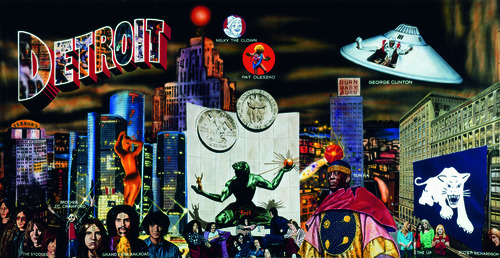
Mike Kelley and Destroy All Monsters Collective (Jim Shaw, Cary Loren), Greetings from Detroit, from Strange Früt: Rock Apocrypha, 2001. Photo by Fredrik Nilsen. Courtesy of the Eli and Edythe Broad Art Museum.
Jim Shaw and the late Mike Kelley have fully cemented their reputations as the quintessential Los Angeles artists of the postmodern era. Kelley left his mark with stuffed-animal assemblages, perverse but literate performances, and bling-encrusted “Memory Ware,” while Shaw continues to astound with dream-sourced drawings, paintings and sculptures, as well as an entire invented religion (dubbed Oism), and increasingly complex allegorical installations.
Right now, you can see their work just about everywhere, on both coasts—Kelley’s “Kandor” series at Hauser & Wirth in L.A.; Shaw at the Marciano Art Foundation’s revamped Wilshire Boulevard Masonic Temple and at Metro Pictures, where the allegories include a series of black-and-white renderings of a hurricane composed from grotesquely distorted faces of our current President.
But the most historically significant gathering of works by these two this season is neither east nor west, but smack dab in the middle. “Michigan Stories: Mike Kelley and Jim Shaw,” on view through Feb. 25th at the MSU Broad Art Museum at Michigan State University in East Lansing. While East Lansing—90 miles northwest of Detroit—is not on many art tourist top 10 destination lists, maybe it should be. With a $28 million endowment from MSU alum Eli Broad, a Cubist architectural showpiece by Zaha Hadid, internationally renowned curator Marc-Olivier Wahler as director, and a 3½-star Marriott hotel a mile from campus, you’d be crazy not to check it out!
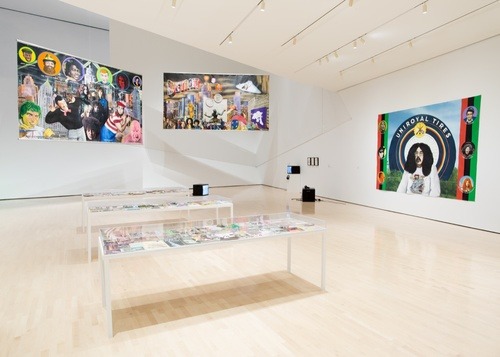
Installation view of Michigan Stories: Mike Kelley and Jim Shaw. Photo by Eat Pomegranate Photography. Courtesy of the Eli and Edythe Broad Art Museum.
“Michigan Stories” explores the formative Midwestern years before the duo migrated west. Kelley’s working-class Catholic upbringing in the Detroit suburb of Westland provided fodder for much of his later work, including the posthumously realized Mobile Homestead, a replica of his childhood home, now permanently installed as a public cultural center in downtown Detroit. Shaw grew up with three older sisters in the more northerly Dow Chemical factory town of Midland.
After the social disintegration following the 1967 Detroit riots, Michigan’s underground culture experienced a foreshadowing of the gritty and desperate urban energy that would soon emerge as punk, complete with a voracious appetite for lower-class vernacular visual culture. But it wasn’t enough: “Leaving Michigan was something you just did,” recalls Shaw when I spoke to him recently. “Why would you stay? There were no jobs, there was no art world.”
Prior to that momentous journey, though, Shaw and Kelley—along with filmmaker Cary Loren and singer/artist Lynn Rovner (a.k.a. Niagara)— formed the proto-punk experimental noise band Destroy All Monsters (DAM), which recorded hours of effects-laden bleats, squawks, and tape loops and published a series of art-damaged zines. At the same time, the DAM collective—most of whom were attending art school at the University of Michigan in Ann Arbor—were producing comparatively traditional paintings, drawings, collages, and sculptures.
“Mike disowned a lot of his early work,” Shaw remembers. “But I’m sure some will come out of the woodwork, because he left a lot of it in the back yard. We just left shit in our Ann Arbor house when we moved to Los Angeles. All these oil paintings and ceramics. Mike only took works on paper. Literally, the back yard was knee deep in stuff.”
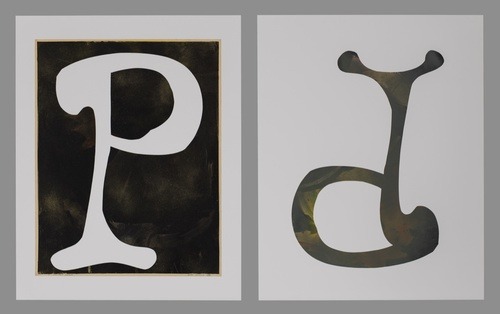
Mike Kelley, Untitled (Collage 1947-2011), 1947-2011. Photo by Fredrik Nilsen. Courtesy of the Eli and Edythe Broad Art Museum.
Among the portable works that were preserved are Kelley’s remarkable “allegorical drawings”—a sort of one-man exquisite corpse experiment that pays homage to Chicago art collective The Hairy Who, underground comix, and MAD artist Basil Wolverton.
A lot of this protean work would remain important to the artists. Decades later, in the 21st century, both Shaw and Kelley would revisit the archive of their surviving undergraduate oeuvres—adding onto or reconfiguring student paintings with the same anthropological perversity they would later apply to deconstructed felt church banners or Famous Monsters of Filmland magazine imagery.
While “Michigan Stories” gathers as many of these archival treasures as it can, the most substantial components date from after the Midwestern exodus, and reflect both artists’ penchant for mythologizing their autobiographical roots. Chief among these fictionalized reminiscences are the selections from Shaw’s “My Mirage” project—an epic avant-garde graphic narrative that follows an archetypal teenager named Billy and his coming of age in the 1960s and early-’70s Michigan counterculture. Comprised of over 150 unique interrelated artifacts—mostly 17-by-14 inch format drawings and paintings—“My Mirage” follows Billy from geekish adolescence through psychedelic hipsterism, then deep into the forgotten subculture of the Jesus Freaks.
“Part of the reason I did ‘My Mirage’,” Shaw remembers, “was to trace some of the beginnings of the Born Again movement—which hit certain aspects of my group pretty hard. It was such a weird vestige of the 1960s—so many people who had been hippies and felt lost became Born Agains.” Before getting washed in the blood of the lamb, though, Billy progresses through an encyclopedic array of pop-cultural and art-historical references, from the obscure (Jess Collins’s “Tricky Cad” collages) to the iconic (Dr. Seuss, Salvador Dalí).

Jim Shaw, Teenagers Talking, 1987. Courtesy of the artist.
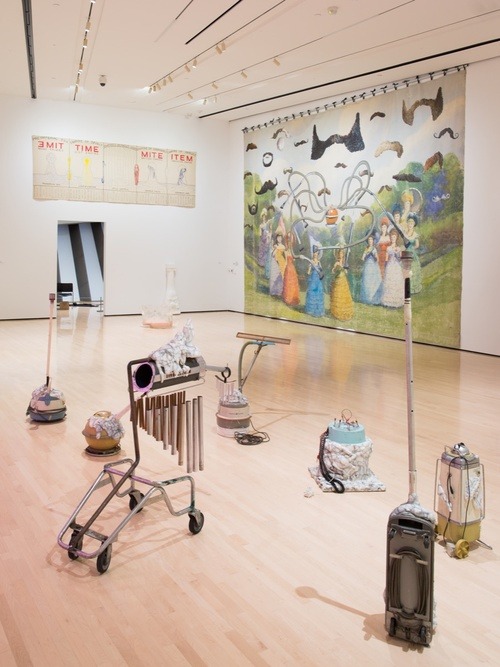
Installation view of Michigan Stories: Mike Kelley and Jim Shaw. Photo by Eat Pomegranate Photography. Courtesy of the Eli and Edythe Broad Art Museum.
This magpie curatorial impulse is a major factor in both Shaw’s and Kelley’s aesthetics. Shaw’s phenomenal archive of unhinged religious posters, conspiracy theory newsletters, and UFO cult recruitment material was the basis for “The Hidden World”—restaged for “Michigan Stories” with expanded sections on legendary L.A. evangelist Miss Velma, the El Cajon-based Unarius Academy of Science (which channelled UFO testimonials from Leonardo da Vinci and other notables), schizophrenic/visionary alien abductee/archeologist Richard Shaver, and the work of Stanisław Szukalski—Polish-born modernist sculptor and inventor of the theory of Zermatism, which details mankind’s eternal struggle with the half-bred Yetis that secretly control the world. Kelley’s own pop-culture hoarding tendencies are represented by his rapid-fire, densely-packed Harem videos, which compile his personal collections of pin-ups, postcards, records, comic books, and more.
All of which points up a central paradox at the heart of “Michigan Stories”: Most of the cultural touchstones that inspired Kelley and Shaw weren’t specific to their geographical location; they were specific to the lower classes, mass media, and the counterculture.
What made Michigan different was that it was ahead of the curve in the slide from 1967’s flower power to 1977’s punk irony—not to mention post-apocalyptic decadence. This was the home of Iggy and the Stooges, after all. The same regional milieu that fostered the Stooges produced MC5 and John Sinclair’s White Panther Party, rock critic Lester Bangs, and some of the most interesting early punk bands, including Destroy All Monsters. This radical, music-centered subculture—rather than any incarnation of the art world—is what spurred Kelley’s and Shaw’s ambitions.
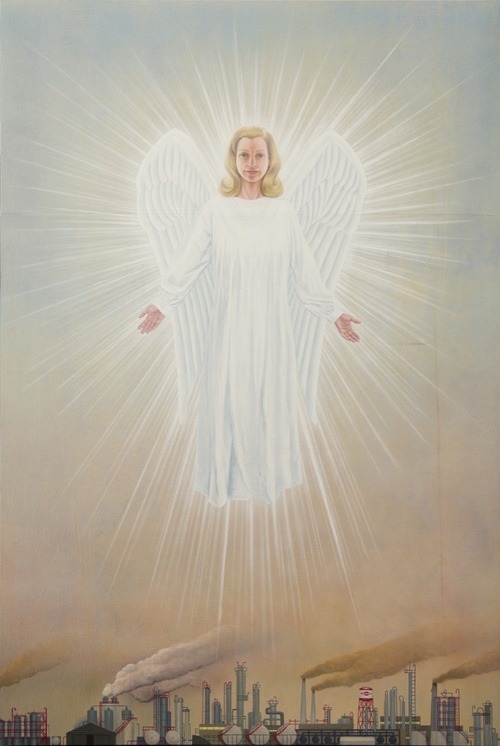
Jim Shaw, The Angel of the Chemical Plant, 2015. Photo by LeeAnn Nickel, Los Angeles. Courtesy of the artist and Simon Lee Gallery, London / Hong Kong.

Jim Shaw, Untitled (Obliterated High School Self Portrait), 2004. Courtesy of the artist.
“Mike always had this urge to be a success,” Shaw tells me, “even when being a success wasn’t a cool thing to want. So it was sort of hidden, cloaked. But again, if you were in Ann Arbor there wasn’t a world to have a success in. Even in New York, the frickin’ art world was moribund in the ‘70s, just aging leftovers of the AbEx era—no wonder we didn’t see any place for ourselves in it. I didn’t care. I just thought ‘There’s gotta be something else to do—let’s start a band!’ ”
Glimmers of new possibilities lured Kelley and Shaw on the road west (in a Ford Pinto and an AMC Gremlin, respectively) in 1976. The rich potentials of their lack of good taste—coupled with the post-industrial ethos of their Midwestern homeland—came to be central to the reinvigoration of their own practices. In time, it would also help jumpstart a considerable chunk of the contemporary art world as well.
The complexity of this debt is probably best exemplified by a group of hagiographic “history painting” banners made by Destroy All Monsters circa 2000. These works half-ironically acknowledged the significance of local Detroit television personalities—Soupy Sales, Captain Jolly, Morgus the Magnificent, wrestler George “The Animal” Steele, and Milky the Clown— and working-class rockers like the Grand Funk Railroad, ? and the Mysterians, Mitch Ryder, and Ted Nugent, as well as bona fide freaks like Sun Ra, George Clinton, and Alice Cooper. All these notable creatives and more are clustered together across three enormous canvases like some MAD magazine parody of The School of Athens. But on the fourth and final canvas there’s only one group pictured—posed in front of Westland Shopping Center, outside Detroit—and of course it’s Destroy All Monsters. History is written by the winners. Or at least the ones that got away.
from Artsy News
0 notes
Photo

🪑Me: What do I even pay you for? 👓Me: You don’t pay me. 🪑Me: ...Oh yeah.
Makin some dumb 4-panel comix
#Accidentally made the top row of panels 5mm taller than the bottom row and it rly bothers me :^(#Tracing Paper Comix#Comic#Comics#Indie Comics#Zine#Zines#Drawing#Illustrations#POSCA#Tracing Paper
27 notes
·
View notes
Photo




I’m also humbled to have my 2019 zine ‘Journal Comix’ announced in the Ledger Awards Short List, alongside a roster of Aussie comics by local legends that I love, respect, and admire 🌟
A huge thanks to the judges for their time and consideration and @ledger_awards for the tireless work of documenting Australian Comics each year
‘Journal Comix’ is a collection of various short #TracingPaperComix based on journal entries.
Most ppl close to me know I dropped out of half a year of Hons demoralised and disillusioned about making art (especially art based on personal storytelling).
These little comics are how I crawled out of the hole, focused on experimenting with my practice, and relearned how to make for the sake of making.
You can read it in full on my site via the link in my bio 🔗👁🗨
25 notes
·
View notes
Photo



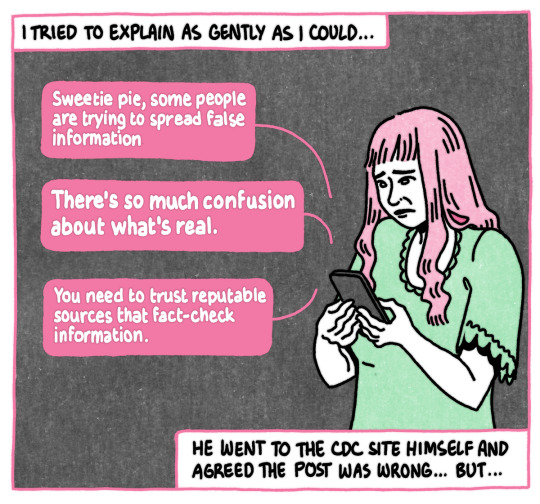
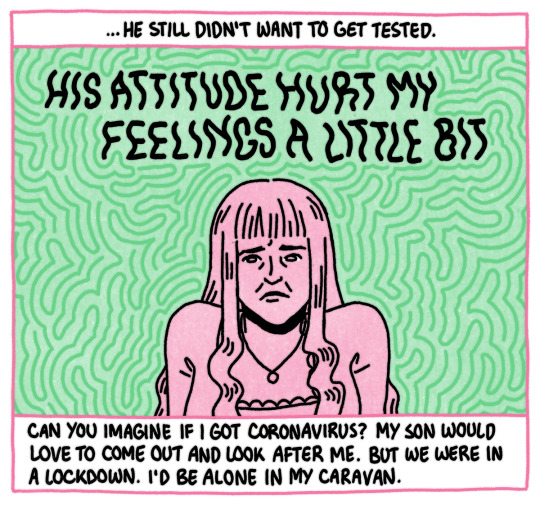
ABC COVID Misinfo Comic snippet (2/2) I made this comic based on the story of 'Nomad Lucy' (and her dog Pixie Angel) who's son wouldn't get tested for COVID-19 because of medical misinfo he saw on Facebook. It published this morning as a part of an ongoing program 'Science Friction' on @abcradionational 📻 Link in bio (Linktree) for the full comic and you can click through to Science Friction to listen to the first radio ep. Special thanks to Ariel Bogle at ABC for developing this story and cowriting the final comic! 🌟
#Tracing Paper Comix#Faux Tracing Paper Comix#Comic#Comics#Drawing#Illustration#Editorial illustration#Editorial Comic
14 notes
·
View notes
Photo
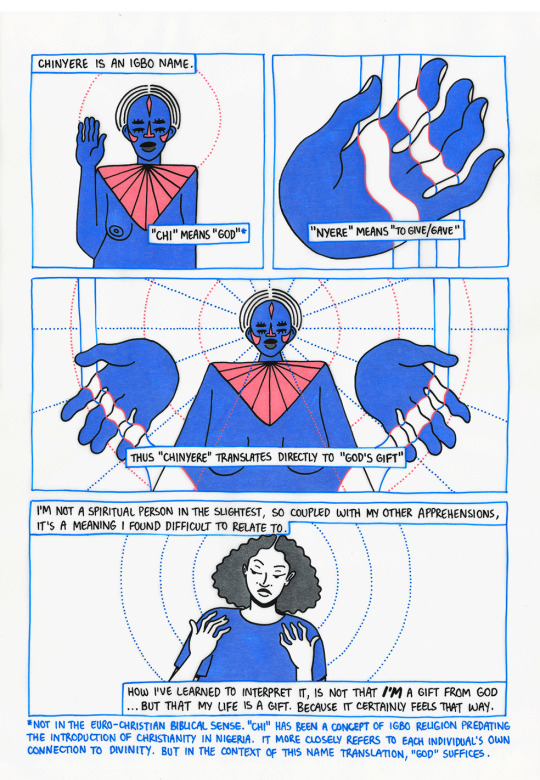
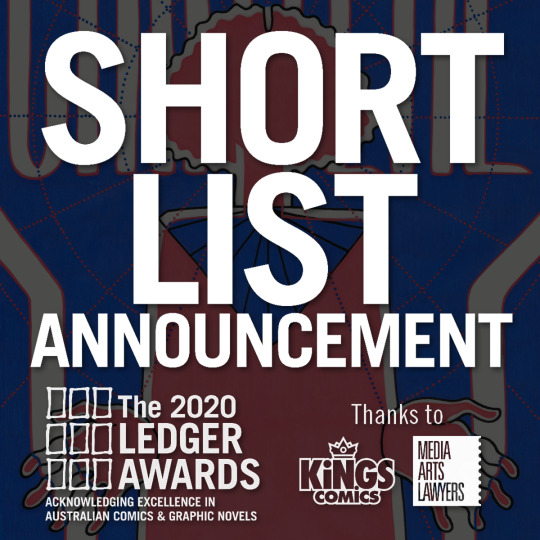
I’m humbled to have my 2019 comic ‘Chinyere’ announced in the Ledger Awards Short List, alongside a roster of Aussie comics by local legends that I love, respect, and admire 🌟
A huge thanks to the judges for their time and consideration and @ledger_awards for the tireless work of documenting Australian Comics each year
‘Chinyere’ is a 15-page autobio comic about education, the geographical lottery, and the meaning of a name.
You can read it in full on my site via the link in my bio 🔗🌞
8 notes
·
View notes
Photo
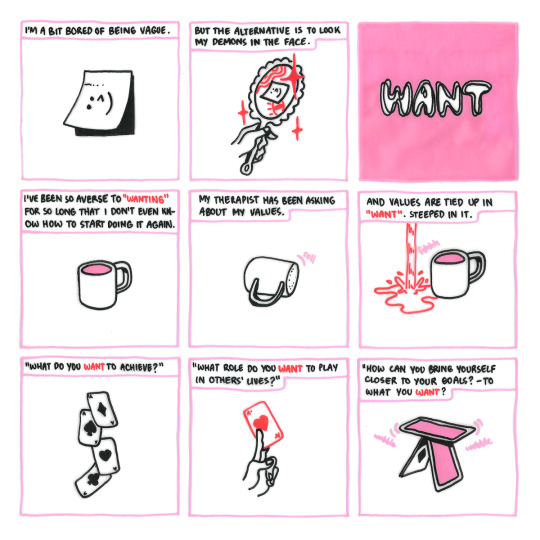
'Want' (Part 1 of 3) 🃏
41 notes
·
View notes
Photo

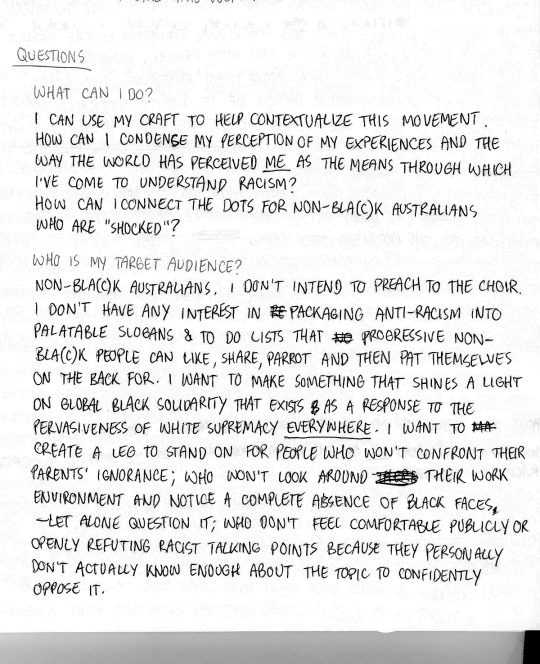
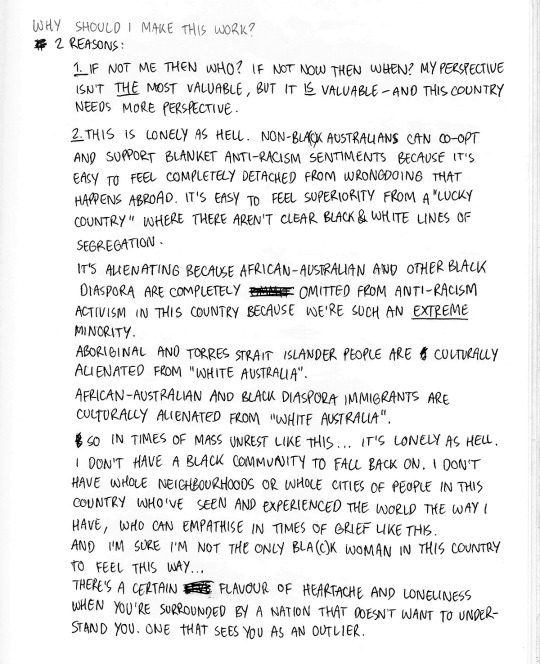
Inked page of the pencils I posted a fortnight ago.
I'm making this BLM comic atm... because I want to throw a pebble in the pond of white opinions on race in Australia.
I get so angry and overwhelmed every time anti-black racism enters our country's national discourse because it's treated like a shocking development. A foreign development. A nuisance that we should stop talking about (before we talk about it). Something purely "imported" from the USA.
And it feels like our discussion is 10 years behind and void of nuance.
I keep seeing Aussie articles and explainers that get mad public pushback, even though they contain the most barebone vanilla ass information like 'racism isn't just being mean to someone because of their race 😮 racism relies on systems of power and we need to consider historical context 😕' and my reaction is REALLY? IT'S 2020 AND THATS WHERE WE'RE AT? THIS IS BRAND NEW INFO TO US? SHIT I LEARNED BY MYSELF BY 20? SHIT INDIGENOUS PEOPLE HAVE BEEN SAYING FOR 200 YEARS? THIS IS RADICAL TO YOU? THIS IS UP FOR DEBATE? ARE YOU KIDDING ME?
And then I reel my anger in.
I dug into this anger and concluded that... my experience isn't universal. My exposure to the insidiously common manifestations of anti-blackness is so foreign to non-black Aussies that I don't even know where to start or how to address it.
So I asked myself these questions (last 2 pics) and decided I can't get crushed by the big picture; I'll do what I can.
I'm sensitive. I'm exhausted. I don't have the heart to be a megaphone for global black injustices that I already know about so that it can be sensationalized and othered by a non-black Aussie social circle then forgotten about when the news cycle changes.
But this country needs perspective. It needs context. And my experience isn't universal, so I have to show it to others: I want to try and explain this phenomenon of Black Solidarity that transcends borders and oceans. I want to try and explain why I'm grieving.
Black ppl all over the US are shining so damn bright and getting so much DONE rn.
Australia is taking baby steps. So I've gotta pick my battles n throw pebbles in. Tryna keep this in mind as I make this comic.
#Forgot to post this yesterday#Tracing Paper Comix#WIP#I guess this is also a PSA for why I'm not out here posting black squares and bla(c)k victims and links and sources and hashtags.#I can't fam.#I've been trying to condense the past decade of seeing that and doing that on my own time into something that makes sense and it's... exhaus
27 notes
·
View notes
Photo
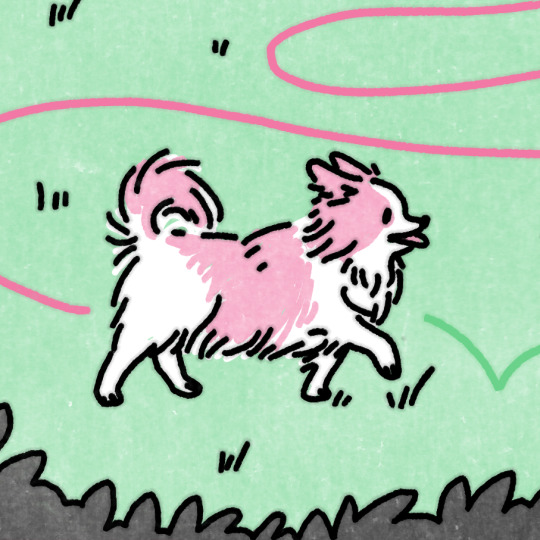
And lastly, but importantly... a solo pic of Pixie Angel hehehe 🐶
(Full comic on @abcradionational via link in my bio)
#doggo#Tracing Paper Comix#Faux Tracing Paper Comics#Comic#Comics#Drawing#Illustration#Editorial Illustration#Editorial Comic
11 notes
·
View notes
Photo
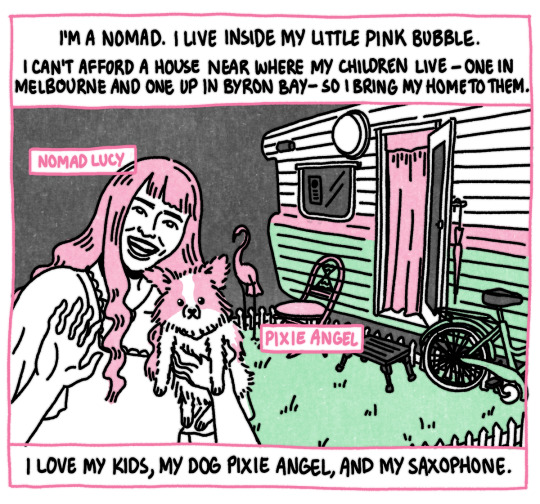
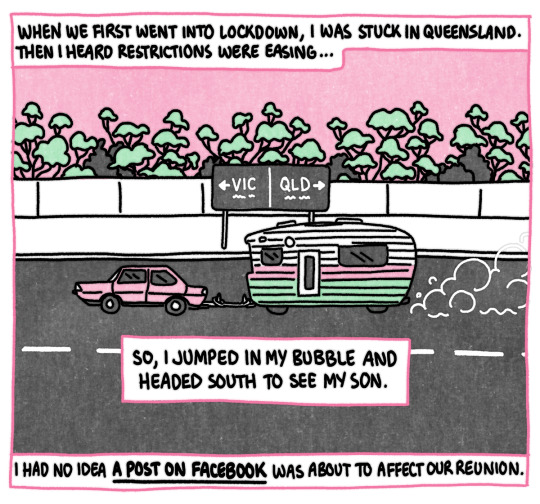

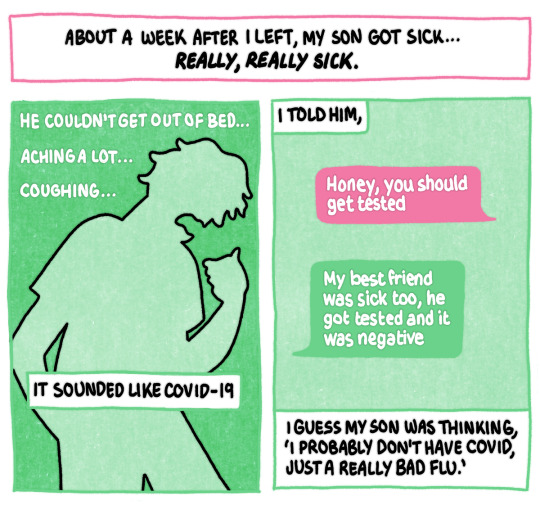
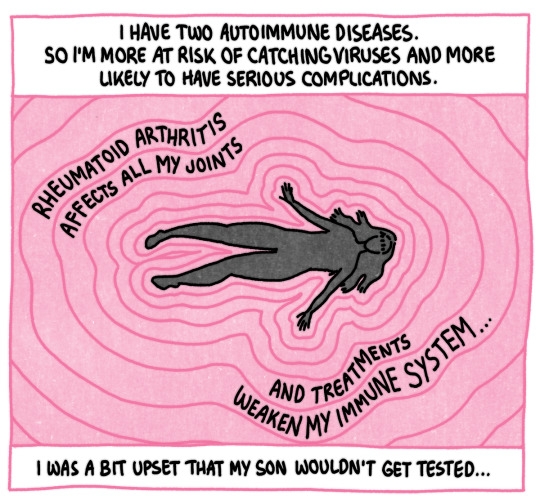
ABC COVID Misinfo Comic snippet (1/2)
I made this comic based on the story of 'Nomad Lucy' (and her dog Pixie Angel) who's son wouldn't get tested for COVID-19 because of medical misinfo he saw on Facebook.
It published this morning as a part of an ongoing program 'Science Friction' on @abcradionational 📻
Link in bio (Linktree) for the full comic and you can click through to Science Friction to listen to the first radio ep
Special thanks to Ariel Bogle at ABC for developing this story and cowriting the final comic! 🌟
#Tracing Paper Comix#Faux Tracing Paper Comix#Comic#Comics#Drawing#Illustration#Editorial Illustration#Editorial Comic
11 notes
·
View notes
Photo


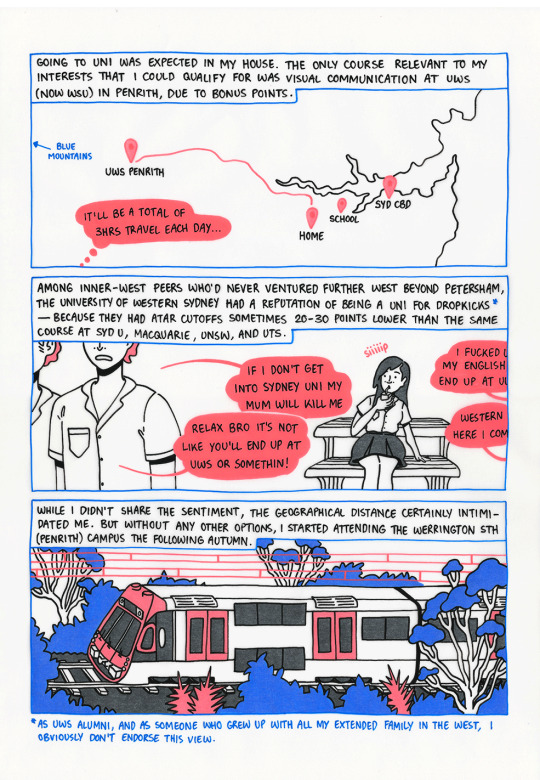
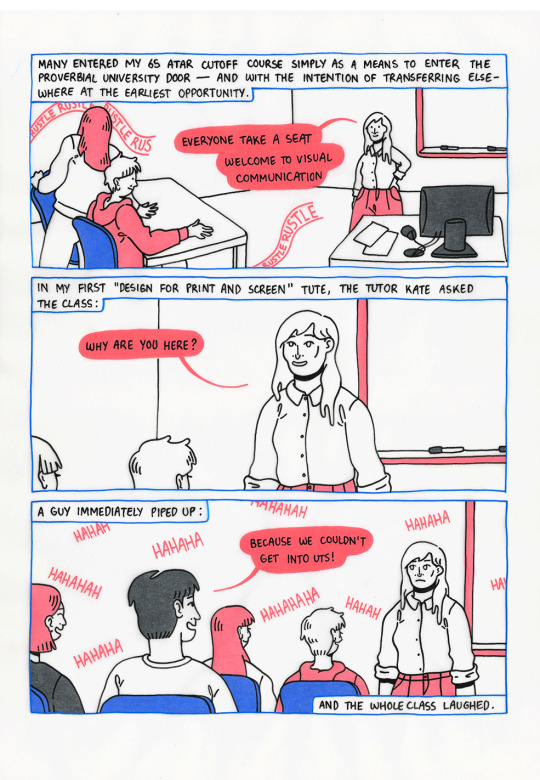
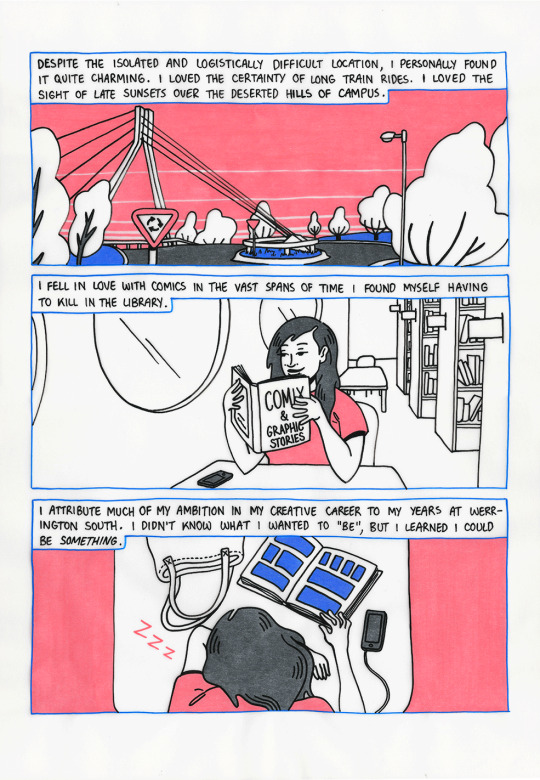
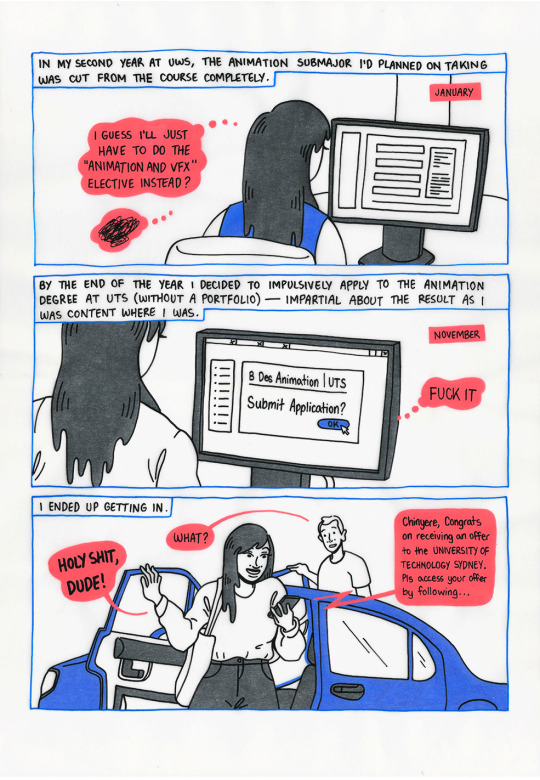
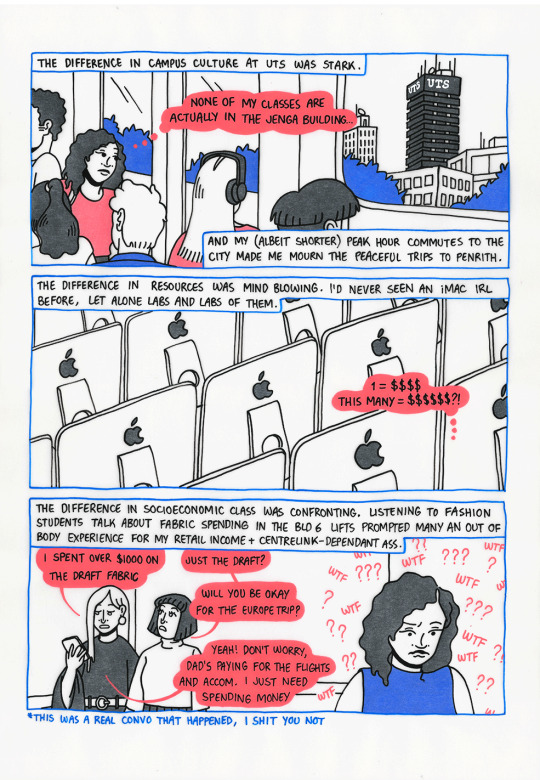
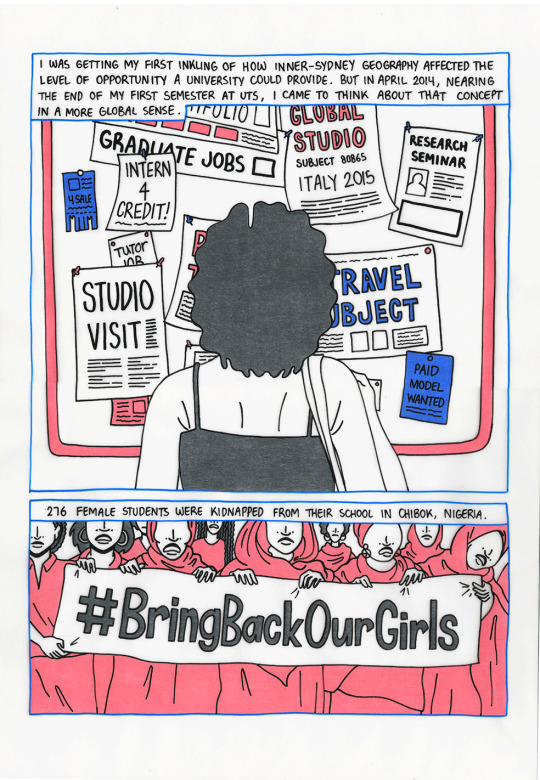
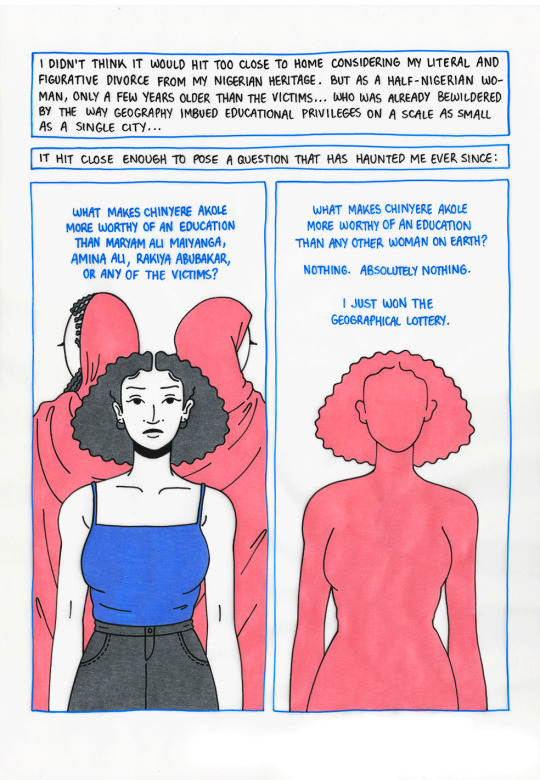
‘Chinyere’ full comic (1/2)
I’ve decided to finally upload the whole comic. Can also read it all on my site 💙
55 notes
·
View notes
Photo
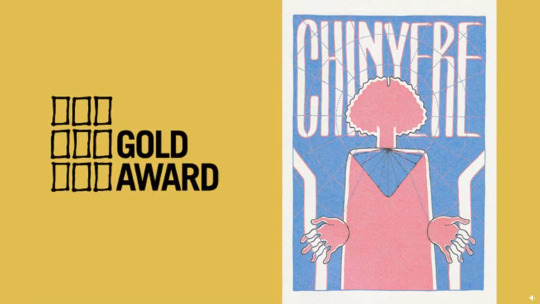
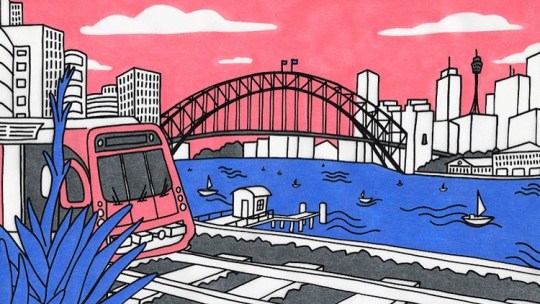
I’m extremely honoured to have my comic ‘Chinyere’ awarded a Gold Ledger in The Ledger Awards 2020 🥺🌷
I really can’t express my gratitude to the judges and my local comix community enough!
And also a thank you to Comic Sans Anthology where the comic was also published in Nov 2019 💗
If anyone would like to read it, I have the full comic online (coz zines are sold out) - the link is in my bio linktree, might need to scroll a bit!
4 notes
·
View notes
Photo

The end is in sight 😪
12 notes
·
View notes
Photo
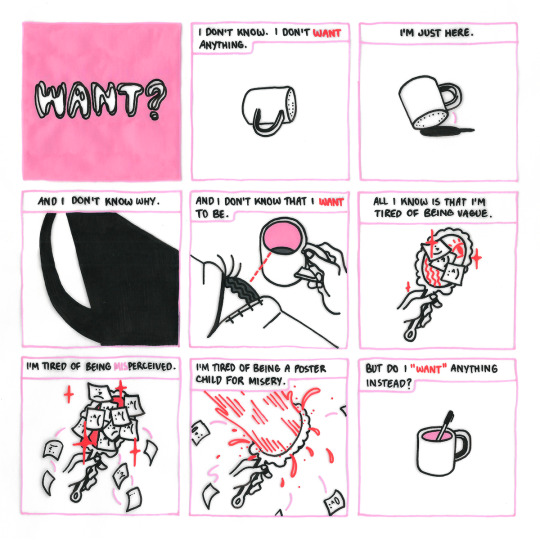
'Want' (Part 2 of 3) 🚿
21 notes
·
View notes